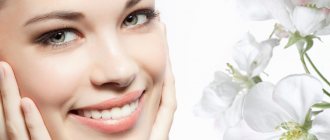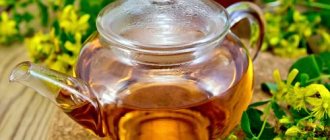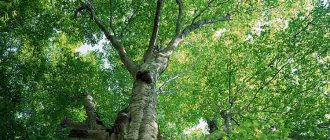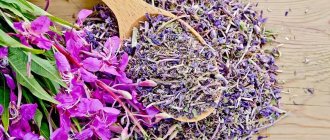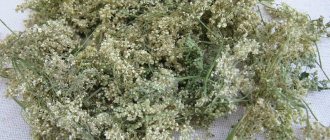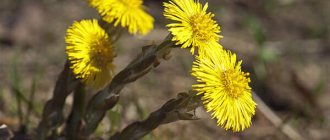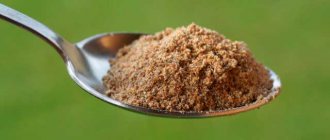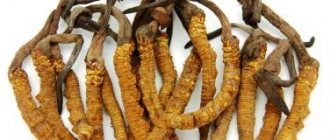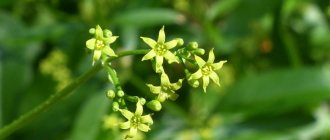Larch is a coniferous plant that is often used in garden decoration, as it is not so difficult to grow. In addition, larch contains a lot of useful substances that are often used in folk medicine. You can find a couple of recipes and forget about going to the pharmacy for a long time.
Description of the plant
Larch contains many different beneficial substances that are used in folk medicine. It contains essential oils (borniacetate, bornaol, a-pinene), tannins, flavanols, coniferin glucoside, cahetins, anthocyons, gum and various organic acids.
In addition, it is rich in adhesives, ascorbic acid, carotene, lignin, fatty oils, abietic acid and rosin. All these substances play one role or another in the treatment of various diseases of the human body.
Habitat
European larch is found in large numbers in the Alps and Carpathians at altitude coordinates (1,000 and 2,000 m). In other altitude ranges of mountain ranges, larch grows mixed with fir and spruce.
American larch grows in North America, Kuril larch grows in Kamchatka. Siberian larch grows in the northeast of Russia, and beyond the Yenisei it is replaced by a similar species - Daurian larch. Moreover, Siberian larch wood is considered elite.
Useful properties of larch
Due to its rich composition, the plant has many medicinal properties that are necessary to maintain the health of our body. Among them:
- relief of symptoms of bronchitis, gangrene of the lungs, catarrh of the respiratory tract;
- treatment of rheumatism, neuralgia, gout;
- stopping bleeding and disinfecting wounds;
- relief of toothache, gumboil;
- removal of sputum when coughing;
- treatment of diarrhea and constipation;
- hernia reduction;
- decreased intensity of menstruation;
- prevention of complications of diabetes mellitus;
- removal of worms, reduction of flatulence;
- pain relief from bruises;
- acceleration of blood clotting;
- reducing inflammation of mucous membranes and organs;
- relieving symptoms of poisoning;
- strengthening the immune system;
- treatment of scurvy, hypertension, pneumonia, tuberculosis;
- reduction of tobacco addiction.
The benefits and harms of chewing sulfur for the human body
How is chewing sulfur useful? Essentially, it strengthens the body and eliminates pathogenic microbes. In some cases, it helps to calm down inflammatory processes. Those who chew chewing sulfur constantly remove some health-related problems from their lives. The main beneficial properties of pine gum are listed below.
Benefits of Baikal sulfur in lozenges for humans
- In case of painful teeth, it can significantly reduce pain.
- Allows significant restoration of tooth enamel
- Blocks harmful bacteria involved in the formation of caries, gingivitis, stomatitis and periodontal disease.
- Makes gums and tooth roots stronger
- In general, it has a beneficial effect on the entire human body
- Has bactericidal properties
- Creates fresh breath
- Protects against everyday stress.
- Neutralizes radiation.
- Cures intoxication.
- Prevents plaque from turning into tartar.
- Whitens teeth.
- Improves the functioning of the gastrointestinal tract.
- Brings the acid-base balance back to normal.
- Promotes salivation and massages the gums.
- Prevents the body from being poisoned by gases from paint, gasoline, smog, exhaust fumes.
- Eliminates poisoning from passive smoking.
- Destroys viruses and bacteria and prevents them from entering the blood.
- Makes the immune system more resistant to pathogenic flora.
- Helps in the fight against nicotine addiction.
Thus, Altai larch sulfur will strengthen your body and make your health even stronger!
Harm of Baikal chewing sulfur in lozenges
- Periodontal disease worsens because it increases blood circulation in the gums.
- If you bite into it, it can damage your teeth and gum tissue because it is hard.
- When chewed on an empty stomach, it can cause heartburn and the development of ulcers.
- It increases the inflammatory process if you immediately put it in your mouth after eating. The fact is that food debris can get between the teeth. First, it is better to rinse your mouth with water, and then start chewing the sulfur resin of the Siberian larch.
- It may pull out the filling. Therefore, be careful when chewing tar gum.
There are also a number of contraindications, that is, who should not chew it.
- Pregnant women.
- Little children.
- Nursing mothers.
- In case of individual intolerance, it is also better not to chew natural pine gum.
This natural chewing gum made from tree resin mainly brings only benefits.
Attention! It is prohibited to use chewing Baikal sulfur in lozenges along with smoking. If you smoke and chew at the same time, carcinogens will be absorbed into the body.
Use in folk medicine
Everything in larch is beneficial , which is why there are a lot of traditional medicine recipes. You can choose one or more of them and quickly improve your health.
- As a laxative and anthelmintic, you can use a decoction of the shoots of the plant in milk. To do this, simmer 20 g of shoots in 200 ml of milk for 15 minutes, and then drink 30 ml of strained broth twice a day.
- For flatulence and cough, pour 30 g of shoots into a glass of boiling water and boil for 8-10 minutes, and then drink, after straining, 80-100 ml three times a day.
- Larch needles show their beneficial properties in the treatment of hypertension and scurvy. To do this, brew 15 g of pine needles with a glass of boiling water and cook for 15 minutes. Afterwards, the broth needs to be cooled and strained. Take 50-60 ml three times a day.
- For colds and fever, 500 g of pine needles are infused in a liter of water in a thermos for 3 hours. After filtering, the medicine is drunk in the morning and evening, 100 ml. If the illness is accompanied by a severe cough, then you can use remedies from the nut bearing lotus to speed up recovery.
- Resin from Siberian and other larch species is beneficial in the treatment of pneumonia, pleurisy and tuberculosis. To do this, pour it with alcohol so that the liquid covers the resin, and wait until it completely dissolves. After this, melted pork fat is added there (half as much as the alcohol infusion) and the product is mixed in a water bath. After cooling, add one part of honey. Drink the mixture three times a day, a small spoon.
- Larch resin also exhibits medicinal properties in the treatment of tobacco addiction, and is recommended to be chewed by those who quit smoking.
- Honey or jam from pine cones will help with loss of strength and asthma. For this, 50-55 cones are poured into a liter of water and boiled for an hour. When the cones soften, drain the water. Next, add a kilogram of sugar and a little citric acid to the pan and set aside in a dark place. When all the sugar has dissolved, take a large spoon a couple of times a day with water. To restore strength, a decoction of lofant, which is known for its tonic properties, will also be useful.
- Larch bark is suitable for everyone who has no contraindications to its use, as it exhibits its medicinal properties in eliminating diarrhea. The infusion should be drunk in 3 doses throughout the day, mixing 5 large spoons of crushed bark and a liter of boiling water and leaving overnight in a thermos. Also, using the infusion for a longer time, you can relieve the symptoms of prostatitis, hemorrhoids and prostate adenoma. Instead of bark, you can use larch resin, which exhibits the same medicinal properties, but more intensely, so you need to put a little less of it.
- Compresses made from pine needle infusion will help in the treatment of gout and varicose veins. For this, the pine needles are brewed in boiling water for an hour and kept in a water bath for another hour. From what has not evaporated, make a compress at night. It can also be alternated with compresses made from burdock infusion to achieve results faster.
- Young pine needles will also help against hemorrhoids and ulcers, 10 large spoons of which are boiled for 15 minutes in 700 ml of water, and then left for another 3 hours. Use the prepared product to wipe the sore spots.
- Tincture of pine needles will help with poisoning and menstrual irregularities. To do this, 50 g of the plant is soaked in a glass of vodka and left for 3 weeks. After filtering, the product is taken 20 drops, diluted in 100 ml of water, once a day.
- Larch gum has beneficial properties for the prevention and treatment of viral diseases, and the best option for its use is a solution. For this, 10 ml of gum is dissolved in 50 ml of warm water and drunk twice a day.
Dosage forms
Many online stores offer larch bark in different versions. It is advisable to purchase this raw material for treatment in herbal pharmacies. There are different types of home remedies you can prepare.
Infusion
Pour crushed dried larch bark into a thermos - 5 tbsp. l. Pour the raw material with a liter of boiled water.
Straining is carried out after 12 hours, so all preparations are carried out in the evening. Throughout the day, drink the entire volume of the healing drink in four doses.
This treatment helps to quickly cope with diarrhea. Used to treat chronic prostatitis, as well as prostate adenoma.
You can purchase the Siberian Larch balm for 400 rubles. The range of indications for this remedy is extensive. Treatment is carried out in accordance with the instructions, taking 1 tsp. half an hour before breakfast, lunch, dinner.
Medicinal products are sold, including Siberian larch in capsule form. You can purchase the “Long-Liver” brew. A 250 ml bottle costs 246 rubles.
Helps strengthen blood vessels, has anti-allergic and anti-inflammatory effects, strengthens the immune system. 1-2 tsp. dissolve in a glass of drink, consume during breakfast, lunch, dinner.
Contraindications
Bark, resin and other parts of larch, in addition to many medicinal properties, also have contraindications , which are worth knowing about when starting treatment. Among them:
- pathologies of the liver and intestines;
- pregnancy;
- intolerance or allergy to pine needles;
- lactation period;
- age up to 6 years.
It is also dangerous to overuse medications and not follow the dosage, as this can cause poisoning, which is accompanied by symptoms such as diarrhea, nausea, vomiting, weakness and dizziness. If they are present, you should rinse your stomach and consult a doctor.
Blank
All parts, with the exception of needles, which are collected throughout the spring-summer period, are harvested in the spring. Resin is particularly difficult to collect. To harvest it, an incision is made on the trunk of the larch in the Siberian spring at the moment the buds swell. It must be of sufficient depth. The oleoresin flowing from the damage is collected in a clean container.
The collected raw materials, with the exception of resin, are dried in a room with as little humidity as possible and at a temperature of no more than twenty-five degrees. Store dried raw materials in the refrigerator for no more than six months. It is not allowed to keep larch preparations in a warm place.
What it looks like and where it grows
Larch (Larix) is a deciduous coniferous tree from the Pine family up to 30 m tall. The trunk of the plant is straight, slightly cone-shaped due to thickening at the bottom, the bark is smooth, gray-brown in color. The crown is narrow pyramidal at a young age and wide cone-shaped in an adult. Bright green needles are arranged spirally or singly on long shoots and in bunches on short ones; with the onset of autumn they completely fall off.
Pink young larch cones have the greatest medicinal value.
Larch blooms from April to June, depending on the region, and produces round, yellowish male spikelets and reddish or green female cones. In autumn they ripen and produce small ovoid seeds with tightly fitting wings. Larch begins to bear fruit at the age of 15 years.
The tree can be seen in the temperate zone and subalpine and subarctic regions of Eurasia and North America. In Russia, larch grows mainly in Siberia and Altai.

